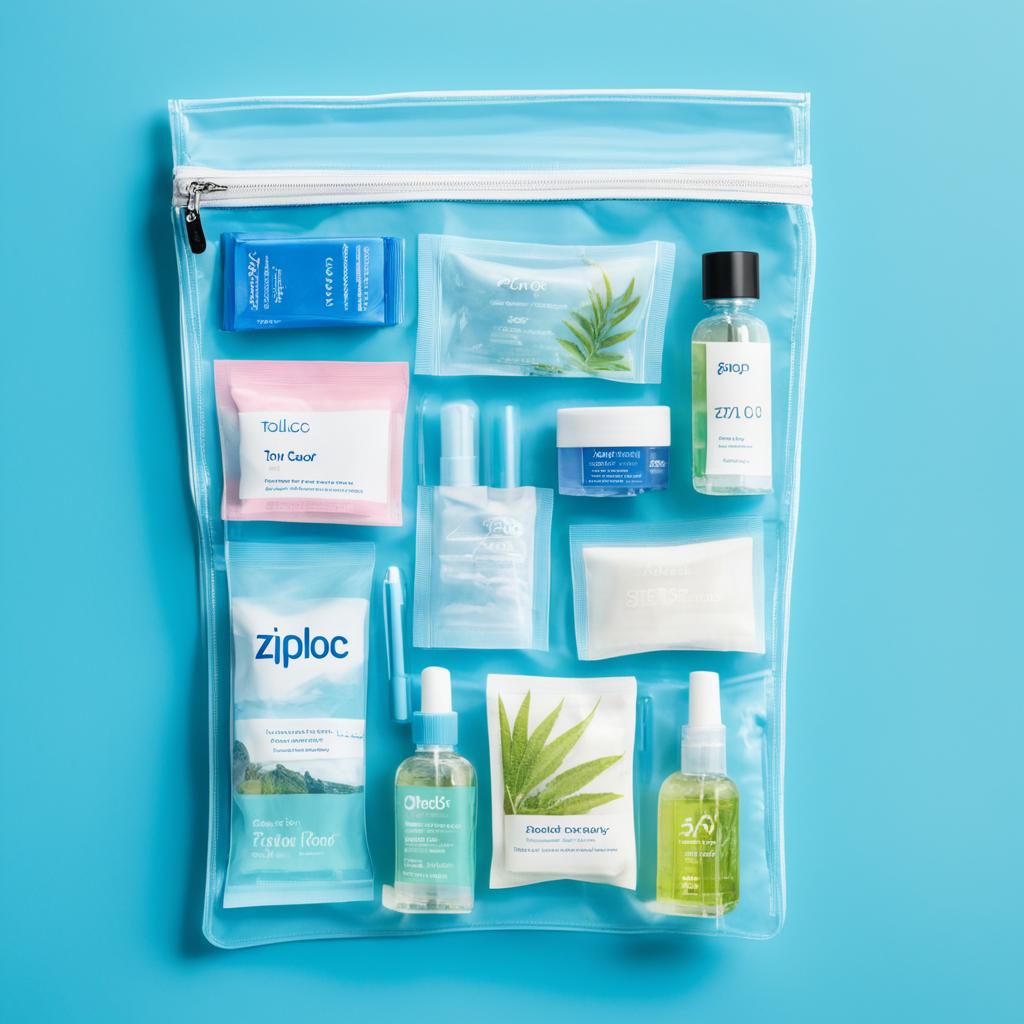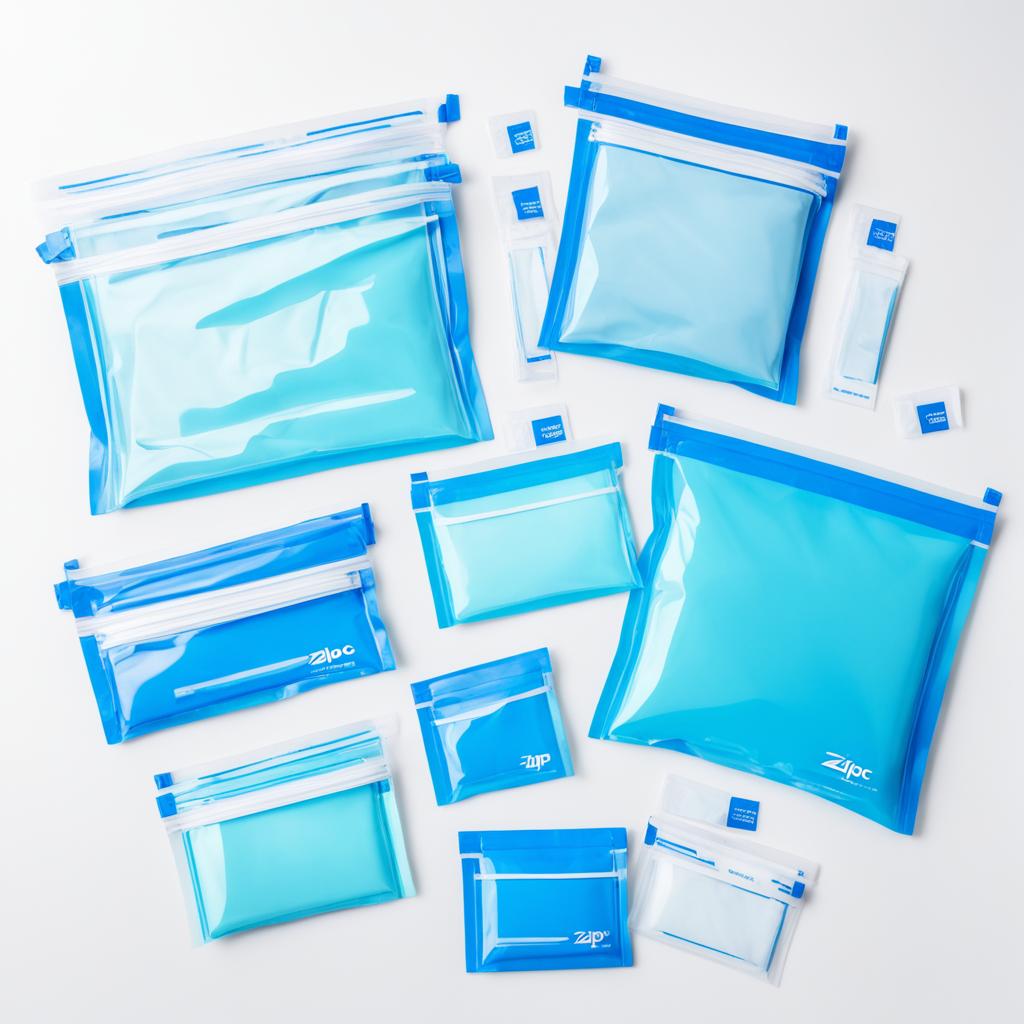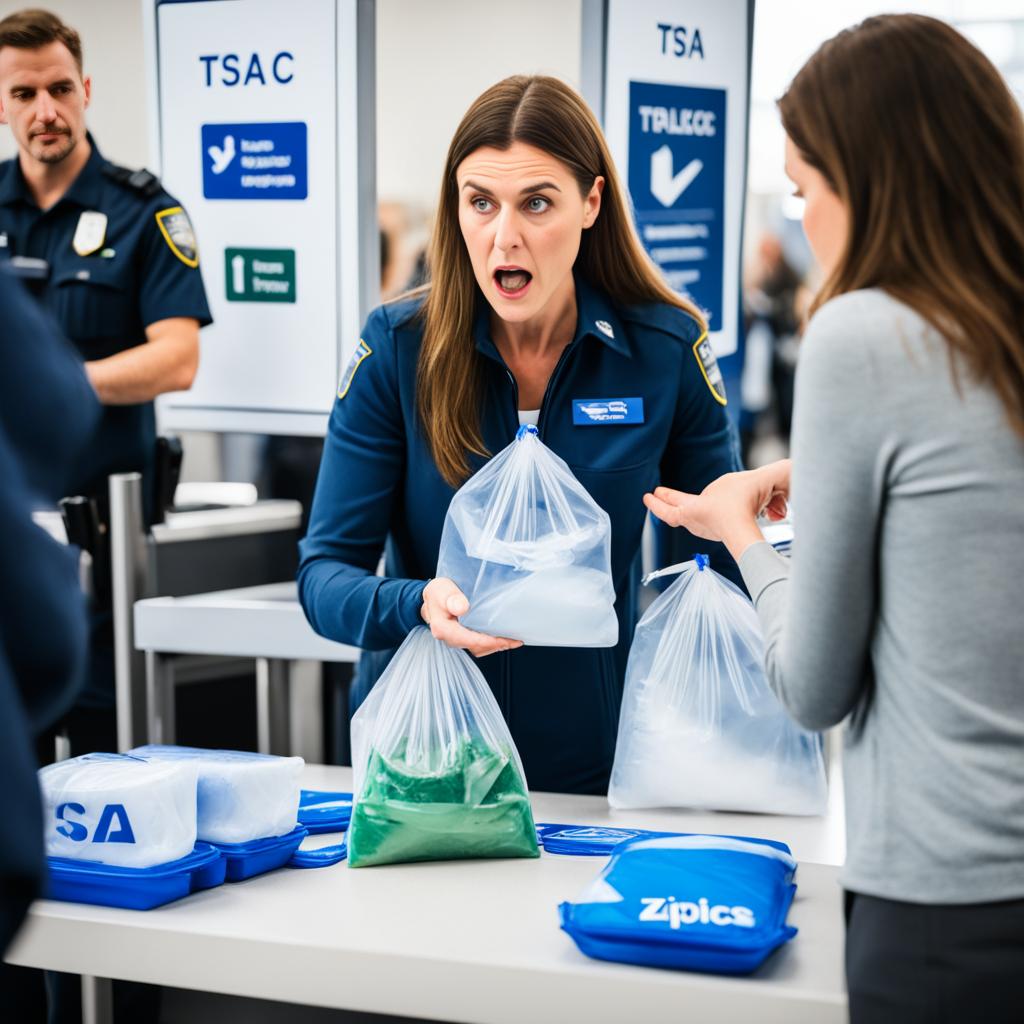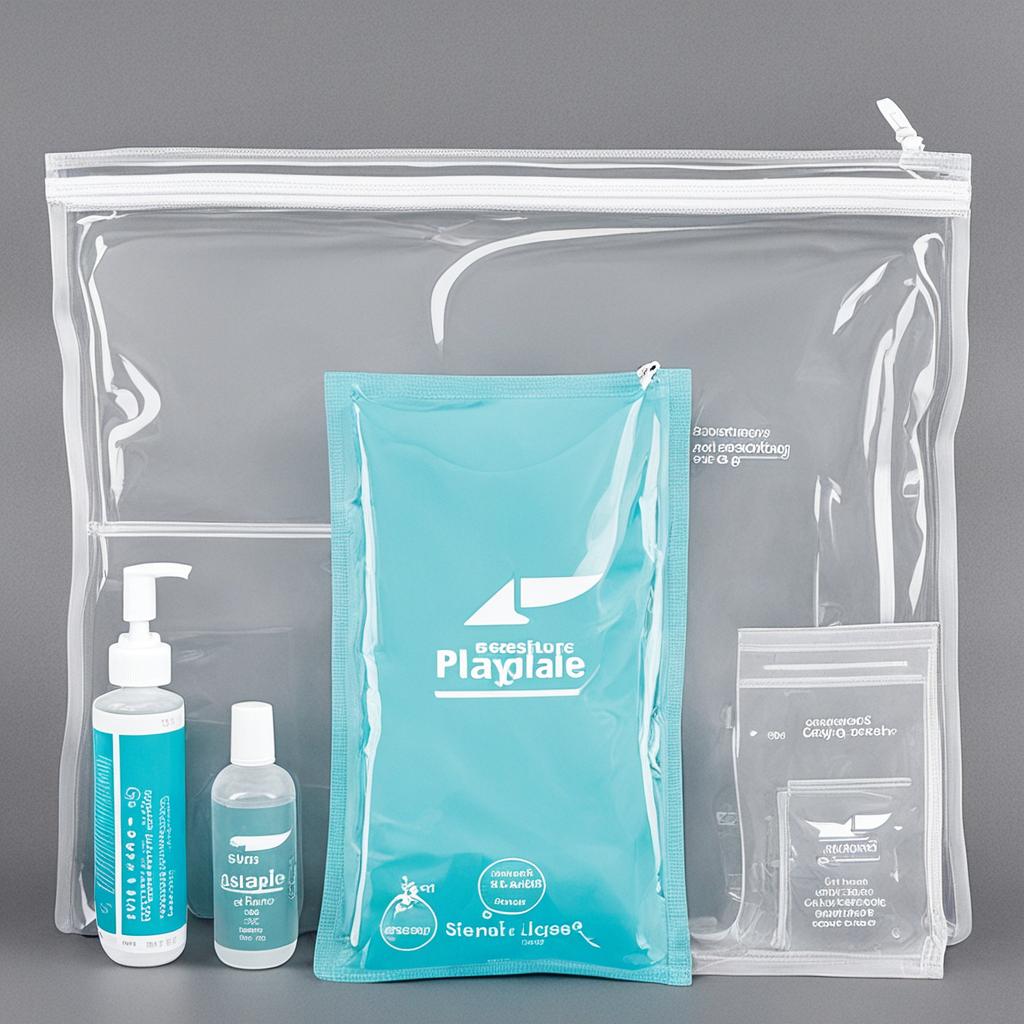When it comes to packing your carry-on luggage for a flight, it’s important to be aware of the guidelines set by the Transportation Security Administration (TSA). One common question travelers have is regarding the size of a Ziploc bag for their liquids and other travel-sized items. In this article, we will explore the TSA guidelines for carry-on luggage and the size restrictions for liquids on flights.
According to the TSA, passengers are allowed to bring a quart-sized bag of liquids, aerosols, gels, creams, and pastes in their carry-on bag. These items must be in travel-sized containers that are 3.4 ounces (100 milliliters) or less per item. The bag must be clear, closed, and re-sealable to facilitate the TSA screening process.
If any of your liquids, gels, or aerosols alarm during the screening, they will require additional screening. It’s worth noting that any liquids over 3.4 ounces or 100 milliliters should be packed in checked baggage instead of your carry-on.
It is important to adhere to these guidelines to ensure a smooth and efficient screening process at the airport. Violating the size restrictions or failing to properly pack your liquids can result in additional scrutiny or even the confiscation of your items.
For a visual reference, take a look at the image below:
As you can see, a quart-sized Ziploc bag is the recommended size for your liquids, gels, and aerosols. Be sure to use the appropriate travel-sized containers and always pack them in a clear, closed, and re-sealable bag.
Now that you know the size of the Ziploc bag you can take on the plane, you can pack your carry-on luggage with confidence, knowing that you are complying with the TSA guidelines for liquids on flights. Safe travels!
Canadian Regulations for Ziploc Bags

When it comes to traveling with liquids on planes, it’s important to be aware of the regulations in Canada. Similar to the United States, Canadian regulations require passengers to use a Ziploc bag to carry their liquids in their carry-on luggage. However, since Canada uses the metric system, the measurements for Ziploc bags may be different.
The maximum size allowed for a Ziploc bag in Canada is 1 quart or 8″ x 7.5″. In metric measurement, the medium freezer bag in Canada is 17.7 cm x 19.6 cm, which is slightly larger than the required size. To ensure compliance with the regulations, it is recommended to use a bag that is as close to the required size as possible.
By carefully choosing the right-sized Ziploc bag, you can easily pack your travel-sized liquids, aerosols, gels, creams, and pastes in your carry-on without any issues. Remember, complying with the regulations not only ensures a smooth journey through airport security but also contributes to the safety and security of all passengers on board.
Ziploc Bag Sizes in Different Countries

The size of a Ziploc bag may vary depending on the country you are traveling to or from. It is important to be aware of the specific regulations in each country to ensure compliance with the restrictions on liquids in carry-on bags.
Ziploc Bag Size in Metric Countries
In metric countries, such as Canada, the maximum size allowed for a Ziploc bag is 1 liter. This is equivalent to 1 quart in non-metric countries. The larger size allows travelers to carry a slightly greater quantity of liquids in their carry-on bags. However, it is still important to adhere to the general guidelines of 3.4 ounces (100 milliliters) or less per item.
Ziploc Bag Size in Non-Metric Countries
In non-metric countries, including the United States, the maximum size allowed for a Ziploc bag remains 1 quart. This size restriction ensures that all passengers have an equal opportunity to carry their necessary liquids in a convenient and organized manner. Remember to keep travel-sized containers within the allowed limit to avoid any issues during the security screening process.
It is crucial to note that these regulations are subject to change, and it is always recommended to check the guidelines of the specific country you are traveling to or from before packing your liquids.
| Country | Ziploc Bag Size |
|---|---|
| Canada | 1 liter (approximately 8″ x 7.5″) |
| United States | 1 quart (approximately 8″ x 7.5″) |
| United Kingdom | 1 liter (approximately 8″ x 7.5″) |
| Australia | 1 liter (approximately 8″ x 7.5″) |
While the specific dimensions may vary slightly, it is important to choose a Ziploc bag that is within the approved size range for the country you are traveling to or from.
Tips for Choosing the Right Ziploc Bag

When it comes to selecting the perfect Ziploc bag for your carry-on liquids, there are a few factors to consider. The right size, closure options, and alternatives to traditional Ziploc bags can make a significant difference in your travel experience. Here are some tips to help you choose wisely:
Choosing the Right Size
Size matters when it comes to Ziploc bags for air travel. To adhere to TSA guidelines, you need a quart-sized bag (approximately 8″ x 7.5″) to hold your travel-sized liquids, gels, and creams. It’s crucial to select a bag that meets these size requirements to ensure a hassle-free security screening process.
Exploring Closure Options
Traditional Ziploc bags with zipper closures are widely accepted by TSA. These bags allow for easy opening and closing, providing convenient access to your items when needed. However, if you’re looking for an alternative, consider Ziploc bags with press-and-seal closures. These offer a secure and airtight seal, ensuring that your liquids stay contained, even when stored in a tightly-packed carry-on bag.
Considering Alternative Options
While Ziploc bags are a popular choice for packing liquids, there are alternatives worth exploring. One option is reusable silicone bags that offer a more eco-friendly solution. These bags are sturdy, leak-proof, and easy to clean, making them a sustainable choice. Additionally, some companies offer specialized travel pouches with multiple compartments to neatly organize your liquids, allowing for easy access and storage during your journey.
Remember, no matter which type of bag you choose, it’s crucial to ensure that it is clear, closed, re-sealable, and within the required size limits specified by TSA and other international regulations.
Choosing the right Ziploc bag size, exploring closure options, and considering alternatives are all important aspects to keep in mind when packing your carry-on liquids. By making informed decisions, you can ensure a smooth and hassle-free travel experience, with all your essential items safely stored and compliant with regulations.
Conclusion
In conclusion, it is crucial to comply with TSA regulations when packing liquids for air travel. To ensure smooth and hassle-free security screenings, remember to follow the guidelines for Ziploc bag size, contents, and closure.
Use a quart-sized, clear, and re-sealable Ziploc bag for your liquids, aerosols, gels, creams, and pastes. Each individual container should be travel-sized, containing 3.4 ounces (100 milliliters) or less. Failure to comply with these regulations may result in additional screening or confiscation of your items, so it’s important to be mindful of the restrictions.
Before your next flight, take a moment to check the specific regulations of the country you are traveling to or from. Although many countries have similar guidelines, there may be slight variations that you need to be aware of in order to remain compliant.
By following these Ziploc bag guidelines for flights and complying with TSA regulations, you can ensure a smooth journey through airport security and enjoy your trip without any unnecessary setbacks or delays.
FAQ
Q: What size Ziploc bag can you take on the plane?
Q: What are the Canadian regulations for Ziploc bags?
Q: What are the Ziploc bag sizes in different countries?
Q: What are some tips for choosing the right Ziploc bag?
Q: What are the guidelines for packing liquids for air travel?
Source Links
- https://www.tsa.gov/travel/security-screening/liquids-rule
- https://www.flyertalk.com/forum/practical-travel-safety-security-issues/982924-i-have-1-gallon-ziploc-bag-not-1-quart-will-tsa-seize-my-toiletries.html
- https://www.fodors.com/community/united-states/canadians-which-size-ziploc-bag-are-you-using-for-liquid-carry-on-items-694855/


